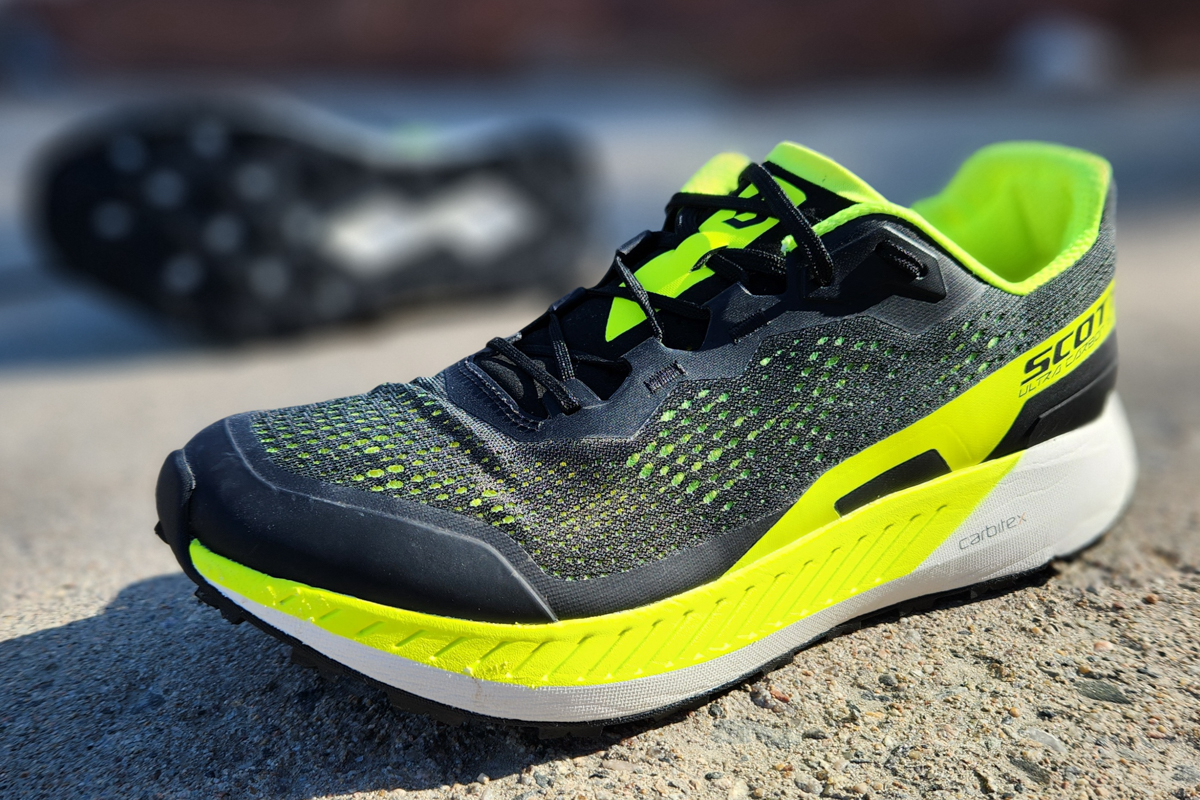
We independently review everything we recommend. When you buy through our links, we may earn a commission.
10.6 oz. (300 g) for a US M9,
9.5 oz (270 g) for a US W7
27 mm in heel, 20 mm in forefoot (7 mm drop)
Short, technical trips to the mountains
Dual-density Kinetic Light midsole, Carbitex Gearflex plate, ER2 rocker geometry
$230
TAYLOR: At one point or another, we’ve all declared that running is simple. After all, you just need a trusty pair of shoes, right? Well, only if you’re a caveman. The rest of us are living in 2023, and we’ve muddied that simplicity by adding… I don’t know… a very specific blend of running socks, GPS watches with more features than the space shuttle, and shoes. So. Many. Shoes.
Even more so than the roads, trail running shoes have seen a steep climb in their technology over the last couple of years. It makes sense when you think about it. I mean, the distances, terrain, and conditions that trail runners choose to endure beg for the absolute best out of a trail-specific shoe. The quest for carbon plates makes this even more complicated. Honestly, the jury is still out on whether throwing a carbon plate into a trail shoe will have similar benefits to its road counterparts, but it hasn’t stopped brands from trying.
If you want my opinion, yes, carbon plates can be of assistance to trail runners. The terrain is the factor to solve for, though. You won’t get quite the same pick-me-up if you use a road-style plate when the technical terrain comes calling. We’ve seen many iterations of carbon plates, like the singular, full-length carbon plate in shoes like the Craft CTM Ultra Carbon 2, Kailas Fuga Elite 2, and Naked T/r; the forked plate, one that splits in multiple directions, like that of the Saucony Endorphin Edge, Speedland GS:TAM, Speedland SL:HSV, and The North Face Summit Vectiv Pro, or the most unique design, which is that of Hoka’s Tecton X. It actually has two plates that run side by side.
We’re a couple of years into this great carbon-plated experiment, so there are several trail companies deep into this sphere of high performance. However, there are still a few stragglers that are finally showing up to the party. One example is Scott, a brand well-known for outdoor endurance gear, and now ready to take the carbon plunge.
The Scott Ultra Carbon RC is a few steps out of its own box. By and large, Scott’s shoes can be characterized as toothy, low-profile, and aimed at the more technical side of trail running. This one offers a broader take on the trail running experience.
Scott athlete, Cody Lind, is a world-class trail runner who has done really well in both Skyrace events and Western States — two extremely different types of trail running. Lind is also the major contributing athlete for the Scott Ultra Carbon RC, which means that this shoe is aimed directly at the most grueling races on Earth. The Ultra Carbon RC is meant for fast, moderately technical, long trail running. Scott’s new launch takes a somewhat similar fashion to other carbon-plated trail racers on the market with a rockered geometry, carbon fiber plate, and a less aggressive upper and outsole. The Scott Ultra Carbon RC takes what we expect from a trail racer and puts its own very Scott-like spin on the platform.
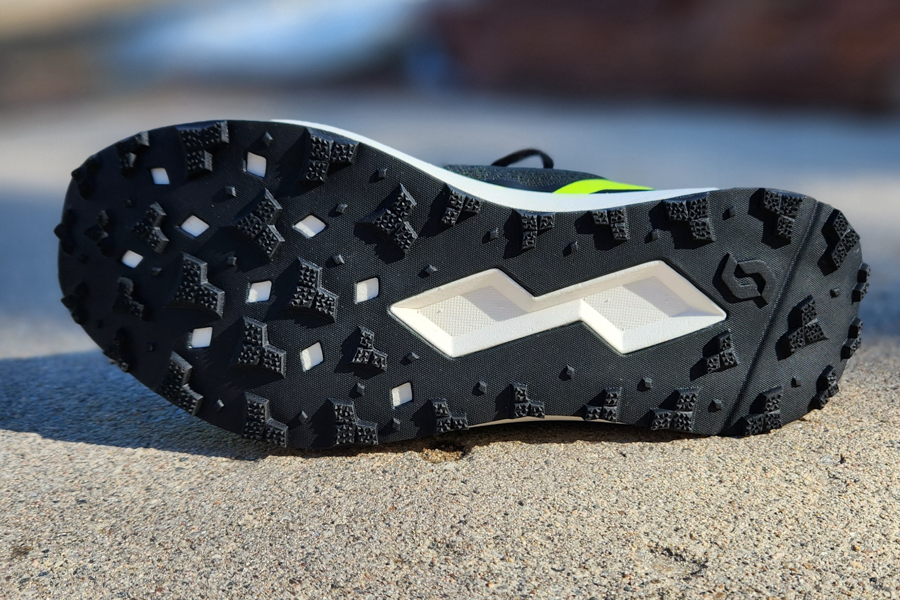
TAYLOR: Scott’s Ultra Carbon RC brings more than its share of characteristics from the brand’s long history. One of those characteristics is the firmer underfoot feet, and I see several reasons why it’s a benefit.
The most obvious reason is protection. I felt like I was behind Leonidas’ shield while wearing the Scott Ultra Carbon RC. Nothing got through the fortified line, and the Kinetic Light Foam kept coming back for more. Even better, this is one of the few protective, firm-feeling shoes that doesn’t feel blocky.
Durability is a big plus, too. Scott’s combination of underfoot materials results in a package that’s resilient enough to hold its shape over time. It’s a shoe that will feel better the more miles you shove into it. The uniquely rockered geometry should hold its shape over the lifetime of the shoe, unlike the softer foams found in shoes like the Tecton X and Endorphin Edge. When those shoes start to break down, they lose a little bit of that snappy curvature towards the toe — the Scott Ultra Carbon RC won’t have that problem.
Scott’s underfoot formula brings a little magic to the overall ride, too. It pairs a firmer Kinetic Light foam with a swallow-tailed Carbitex Gearflex plate and the ER2 rocker I mentioned above. For the most part, the firm platform manages to avoid compression as you roll through your stride. If you set the Scott Ultra Carbon RC on a table, you’ll notice that only about a third of the shoe makes contact — both the heel and toe have some pretty serious taper. Such an exaggerated rocker makes a big difference as you go long since it helps to maintain a natural stride.
Where the Kinetic Light foam and Gearflex carbon plate really come into play is a subtle snap in every stride. It’s not the typical soft compression of foam and bounce that you get with carbon-plated shoes. The ride of the Scott Ultra Carbon RC falls closer to the Craft Ultra Carbon 2 or Kailas Fuga Elite 2 than anything else I’ve experienced. There was a slight softening of the foam over my testing period — nothing too significant, though. I suppose a benefit of that is that the ride will remain consistent for the life of the shoe.
Scott shoes are also typically known for how they handle technical terrain. Despite its less aggressive outsole, the Ultra Carbon RC still lands among the best when it comes to grip. Instead of large, claw-like lugs, the Ultra Carbon RC uses a semi-radial design for an even grip on all planes of movement. Scott describes it as ready for “smooth summer trails of any distance and speed,” and I agree. It feels pretty good on roads and gravel, too.
I have no concerns with the durability of the rubber either.
The Ultra Carbon RC has a surprisingly secure fit to hold it all together. The upper is simpler than it looks, and it fits better, too. Scott used a dual-layered mesh with an airy outer layer and a finer inner layer, which handles small rocks and dust without issue.
For a shoe that’s designed for ultra racing, I appreciate that the Scott Ultra Carbon RC feels a bit more accommodating than the company’s other models. I wouldn’t call it spacious, but it should play nicely with almost any foot width or shape. The semi-gusseted tongue, midfoot, and heel collar all have strategically placed padding to offer a very secure fit that holds through any type of terrain I threw at it.
Shop Scott Ultra Carbon RC - Men Shop Scott Ultra Carbon RC - Women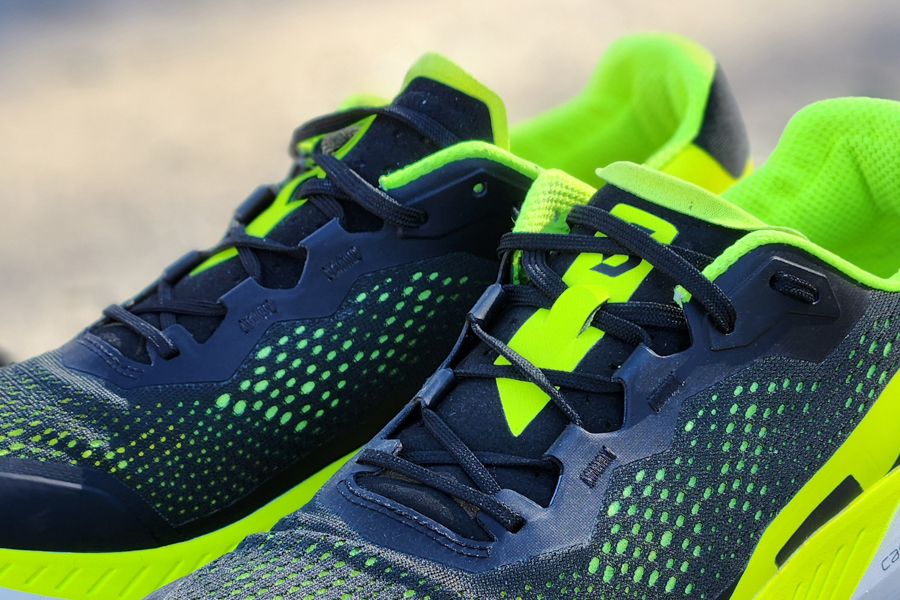
TAYLOR: I’m sure, dear reader, that you could see this coming a mile away. It’s tough to count on a firm shoe when you’re trying to go the distance with any sort of long-term comfort and propulsion. It would take a special set of feet and legs to bear this durometer over a hundred miles. Scott’s Ultra Carbon RC tells a similar story to the VJ Ultra, Craft Ultra Carbon 2, Kailas Fuga Elite 2, and the original Flight Vectiv — and it’s not a story I love. Sure, you could spend half a day or more in the shoe, but going double-digit hours would test you in ways you didn’t bargain for.
With a midsole this firm, there’s not much benefit out of the Carbitex plate, either. The midsole shaping is what gives the Scott Ultra Carbon RC its shine, leaving the plate feeling a bit underserved. As much as I love Carbitex’s technology in other shoes, the Gearflex setup might be a bit more advanced than the Ultra Carbon RC needs. It’s a nice marketing bump but needs a softer formula of Kinetic Light foam to really shine through.
A shoe’s weight will always be a factor when we’re looking at a race-day pick. My US M10.5 tipped the scales at 11.9 oz. (337 g). When other shoes in the same category are around 2 oz. lighter, Scott’s shoe feels quite heavy. It makes up for that with great durability, but you have to decide what matters most to you.
Shop Scott Ultra Carbon RC - Men Shop Scott Ultra Carbon RC - Women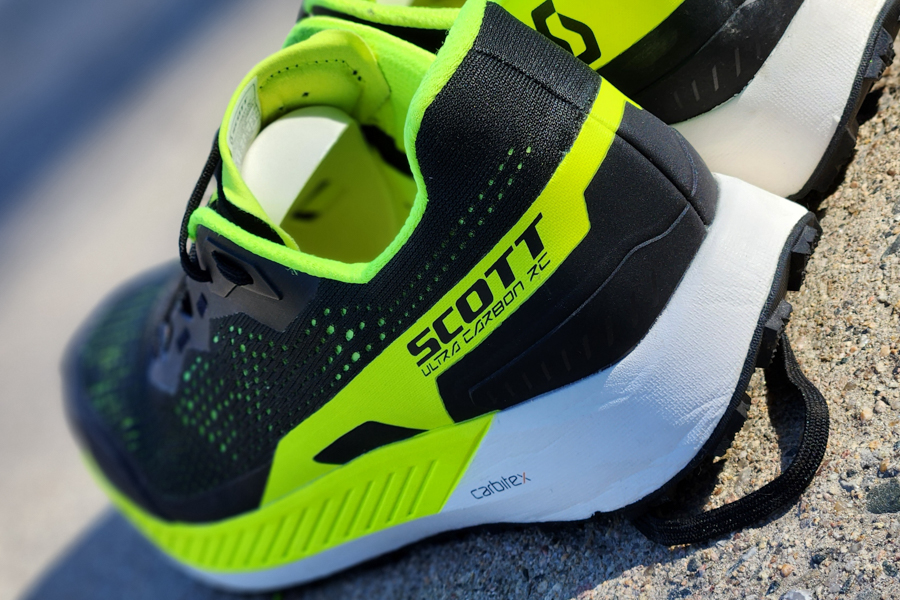
TAYLOR: Scott swings for the fences with the Ultra Carbon RC, its first ultra-distance trail racer. I’d say it definitely connected on the swing, but it came down in the warning track.
There’s plenty for Scott to be proud of — the midsole shaping pairs nicely with the durable foam, and the upper fits pretty nicely. It’s an uber-efficient option for any pace and any place, but the overall comfort is a limiting factor.
I hope the Scott Ultra Carbon RC sticks around for a few iterations because I think a couple of adjustments could turn this shoe into a serious contender. The first attempt just misses the chance to leverage its best tech and simply isn’t in the same category as some other modern ultra-racing options.
You can pick up the Scott Ultra Carbon RC for $230 on Scott’s website using the buttons below.
Want to learn more about how our review process works? Check out this guide.
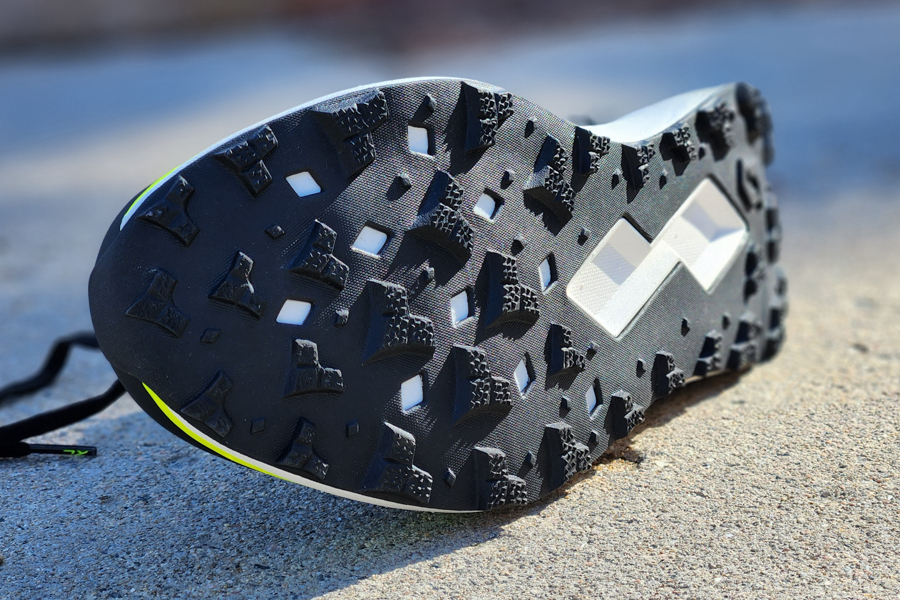
Have something to say? Leave a Comment

Taylor Bodin is a trail and ultra runner living in Estes Park, Colo., with his wife and daughters. As the head of the Dirt Division at Believe in the Run, trail running is pretty much the only hobby he can manage right now and loves it. Every so often, he will pop off a race or FKT attempt because competition is pure and the original motivator for him getting into running anyway.
More from Taylor